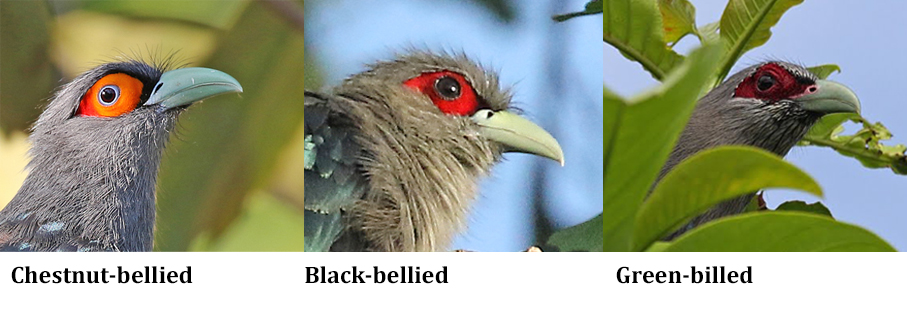There are six species of malkohas on the Malaysian list (although one, Raffles’s, according to mtDNA studies, is not really a malkoha at all). Of these, Raffles’s, Red-billed and Chestnut-breasted are so distinctive that they are identifiable with all but the poorest of views. The other three, Chestnut-bellied, Black-bellied and Green-billed, are more similar to one another in plumage, and, although, with good views, they can be easily separated, their furtive behaviour means that, sometimes, good views of the salient details (such as tail length, belly and vent colour, and precise colours on the head) are not easily obtained. Additionally, juveniles are less distinctive than adults.
I won’t go into features which are already described in field guides here, but there is an additional detail not covered in literature that I have access to which can be surprisingly useful for determining identification, especially if photographs are taken; the shape of the nostril.

In Chestnut-bellied, the nostril is a long slit which runs parallel to the line where the bill meets the lores. In Black-bellied, it is shorter and more triangular – an apostrophe shape which runs vertically down from the top of the bill/lores line, at times appearing to be joined to the black of the lores. In Green-billed, it is more or less circular. These apparently small differences are surprisingly obvious, even in poor photos, and in the field, as malkohas characteristically stick their heads out of thick vegetation to look for prey.



